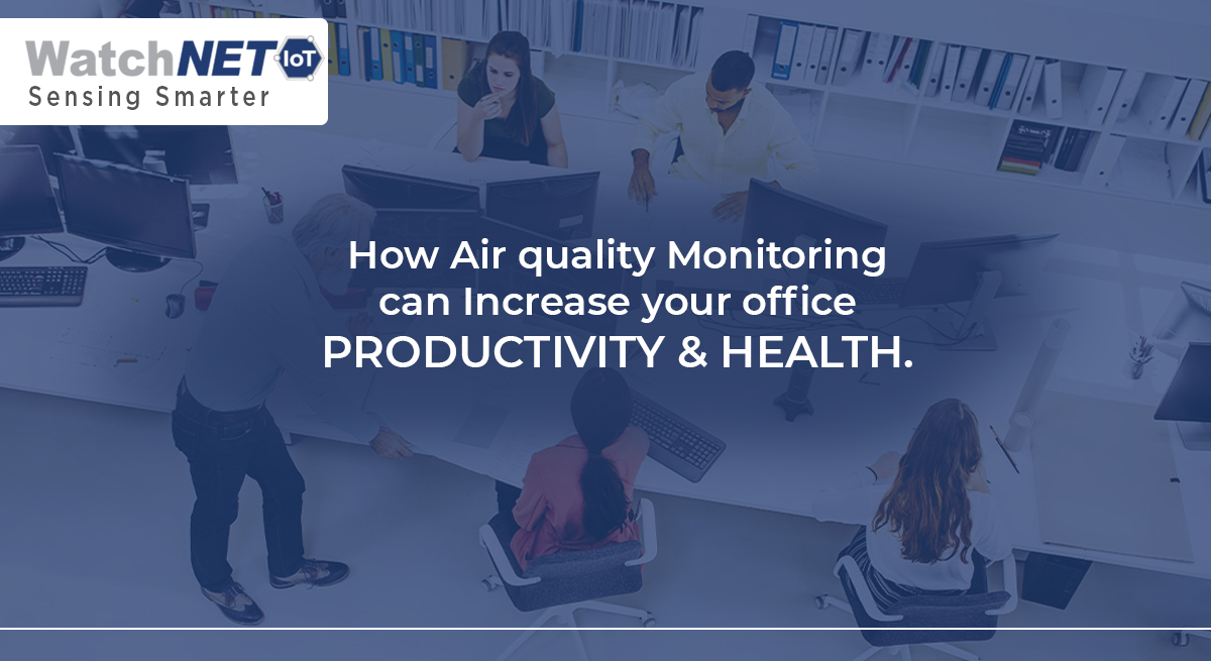
In order to improve their business processes, organizations rapidly implement new solutions and software resulting in process automation.The impetus over recent years to conserve energy has resulted in warmer, tighter buildings with much reduced air exchange and therefore a greater propensity for indoor pollutants to build up; the combination of reduced ventilation rates (especially in winter), warmer and more humid conditions indoors, together with the greater use and diversity of materials, furnishings and consumer products, has resulted in concentrations of a wide range of pollutants occurring indoors at levels exceeding those outdoors.
Indoor air pollution in working places is widely recognized as one of the most serious potential environment risks to human health. Fast urbanization trends are increasing the indoor pollution and causing high rates of sick leave among office workers, while employers are not aware of this problem, especially if we consider the fact that this can cause serious productivity loss if not assessed properly and on time. Assessing IAQ in office buildings of both public and private organizations, should be the main focus of employers and employees in both, developed and developing countries. Industrialized and developed countries have already recognized the health issues that low IAQ could cause. In developing countries, this problem persists and has potential to become a health hazard that may cause a serious money loss among the employers.
IAQ and it’s effect on performance and health
IAQ is defined by four factors such as temperature, humidity, room air motion and contaminant concentration. Therefore, it is a primary concern in developing countries and it is why our main goal is to raise awareness among employers and their employees for the negative effects of poor IAQ upon their performance. Studies have showed us that indoor environmental quality do influence the prevalence of acute respiratory illnesses, allergies and asthma, and sick building symptoms.
Deteriorated indoor environments cause various symptoms, sicknesses, reduced comfort and loss of concentration which may result in inconsistent work, longer breaks, less care of customers, shorter working hours and sick leaves. Keeping the indoor environment healthy and safe includes listening and assessing employee’s complaints on low or high temperature level, air humidity, health symptoms that occurred while working in the office, etc. Uncomfortably high temperatures can cause fatigue, which can then lead to awkward postures such as slouching or slumping in the chair; the cool air blowing directly down can cause cold feet and hands, as well as increased muscle tension and increased risk of ailments.
There are many Sources Of Indoor Air Pollutants:
- Building Materials And Interior Supplies: Beyond the internal organization of the building, materials used for construction, as well as those used for interior supplies can be a generator of air pollution. Volatile organic components, formaldehyde often appear in new builds, or in renovations.
- Human Emissions: Breathing produces CO2 that pollutes the air, but there are other human factors, such as perfumes, or intestinal gas, bacteria and other viruses produced by sneezing, or dead skin , hair loss that contribute to the dust present in the air.
- Equipment: markers for boards, paper, computers, photocopiers and printers produce many volatile components that spread in the ambient air Solvents, degreasing agents, release agents.
- Cleaning products: cleaning agents can contaminate indoor air for long periods of time and may contain preservatives, disinfectants (aldehydes), solvents (glycols, isopropanol), organic acids, perfumes, etc
- Combustion: Kitchens, tobacco, open fires, etc
- Outside sources: vehicle exhaust gases, produced by factories, from agriculture or pollen, spores or gas from the soil.
IoT and IAQ
Hence IAQ transparency is vital for the employees for an enhanced productivity. This could be better achieved by coupling new technologies like ground-based smart sensors, satellite remote sensing sensors, computational technologies like machine learning, Artificial intelligence, and Internet of Things (IoT). The use of quality sensors for reliable readings provide real-time data access to indoor air quality and a database for reviewing past performance. They are also capable of suggesting when to use purifiers or filters and can even adjust the quantity of air when needed.
Today, IoT solutions, uses low-power wireless sensors to monitor and measure air quality inside buildings. The sensors take readings of particulate matter in the air, as well as temperature and humidity levels, to inform building managers whether the ventilation system appropriately filters air to reduce airborne virus transmission.
Watchnet Air Purifier sensors , Watchnet Liquid Level Sensors
Thanks to IoT applications, sensors can monitor water, humidity, and temperature to detect leak anomalies that indicate problems such as leaking pipes. When something goes wrong, the sensors use wireless connections to issue alerts and can automatically trigger a valve shutoff to minimize the damage all of these benefits aid in cutting down on potential water damage claims.
Watchnet Ambient Air Sensors , Watchnet Light Sensors
Data from these sensors is collected continually to help with water use management and reduce waste. The technology is beneficial in preventing damage that can cause shutdowns and reducing water use when possible. IoT-based solutions can give building owners and operators real-time data and information to take quick action whether it is in response to a federal clean air initiative, reducing energy and operating costs.
Watchnet Water Leak Sensors , Watchnet In House Facility Sensors
IoT’s Assistance In Monitoring IAQ
The IoT factory has developed a specific solution to measure the quality of indoor air, composed of dedicated sensors, connected – through any type of communications network – to a web and mobile application.
This solution allows:
- Real-time monitoring of temperature, relative humidity and CO2 levels, measured in different rooms / buildings
- The visualization on geographical map, or on plan of a building, of the measurement points
- The consultation of historical data (in order to understand and anticipate the future),
- The generation of alerts when thresholds are exceeded.
Continuous measurement of indoor air quality is more than just a gadget. In the company, this measure makes it possible to increase the productivity of employees and to reduce absences for illness. It helps to increase well-being in the office.
In public places, such as hospitals, schools, nurseries, sports centers, it is a safe bet that states and Europe will quickly legislate to set acceptable thresholds, and impose the measurement of CO2, temperature and energy. humidity to ensure compliance with regulations. As for homes, the control of air quality must be able to fight like diseases and mortality related to poor indoor air quality.
The Internet of Things, through the implementation of dedicated sensors, connected to a monitoring and notification software through communication networks such as LoRa, SigFox or wifi makes it possible to contribute seriously to the increase of the indoor air quality.

